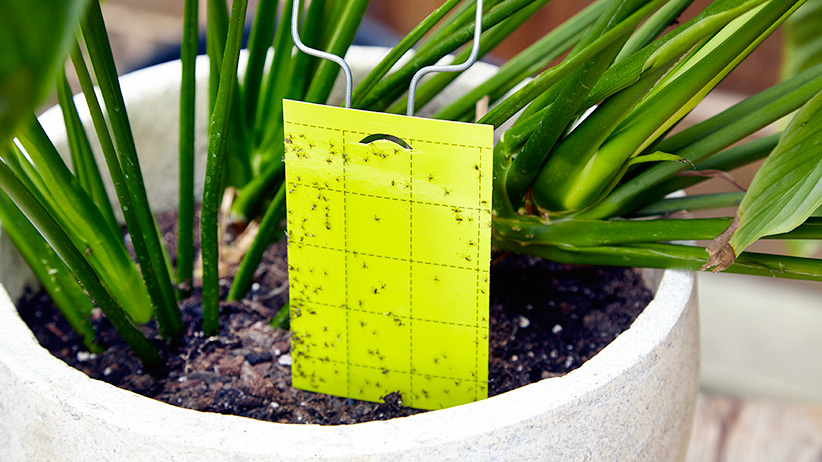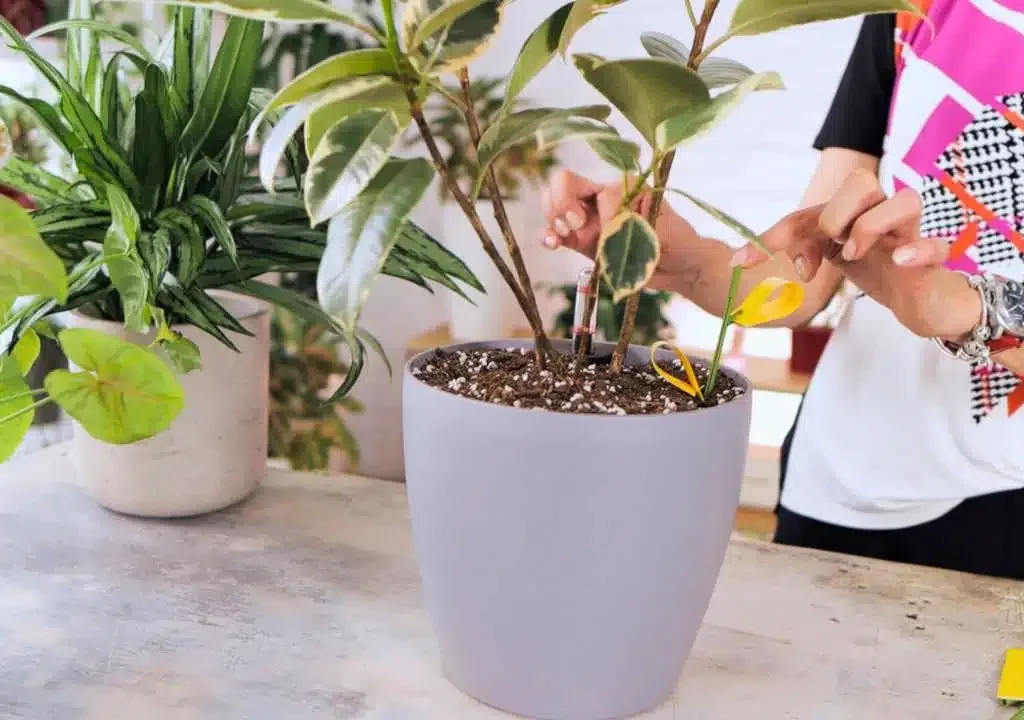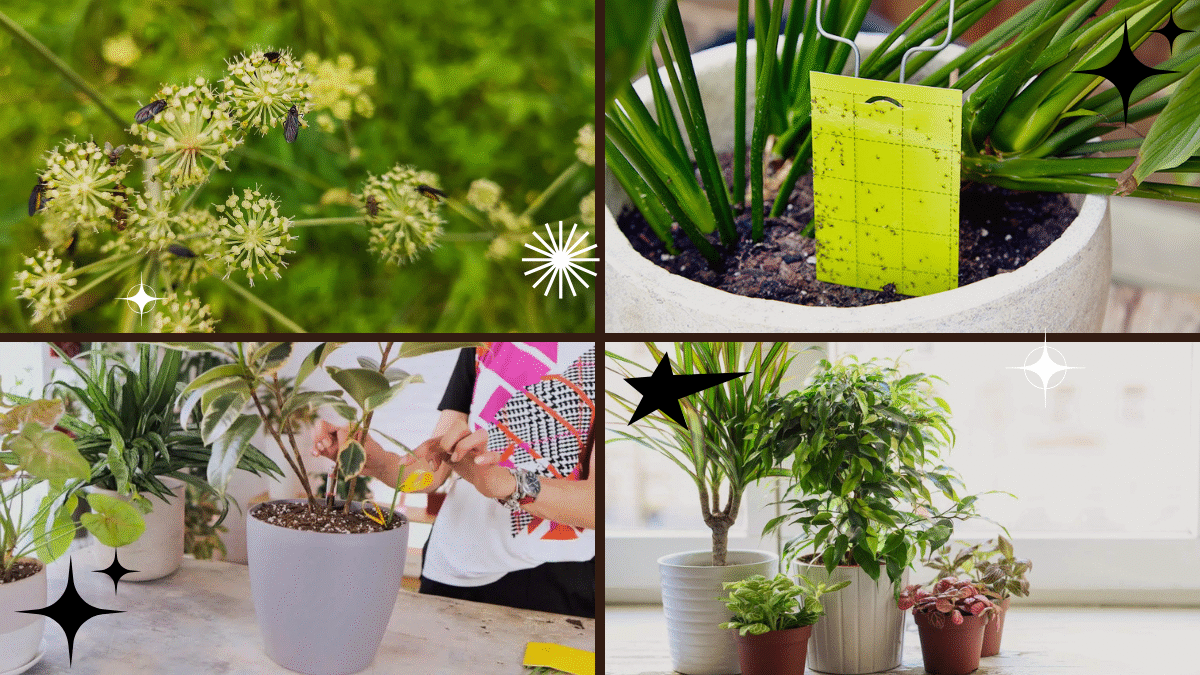Have you noticed tiny, annoying flies buzzing around your houseplants or garden? Those little nuisances are likely fungus gnats — a common pest problem that frustrates plant lovers everywhere. While gnats are harmless to humans, they can be damaging to your plants and extremely annoying in your home.
The good news? You can effectively get rid of gnats in your plants using natural, safe, and simple methods. This comprehensive guide will teach you how to identify, prevent, and eliminate gnats from your indoor and outdoor plants, so you can enjoy a pest-free, thriving plant collection.

What Are Gnats?
Gnats are small, mosquito-like insects from the Diptera order. The type of gnat most plant owners deal with is the fungus gnat. These tiny, black or gray flies thrive in moist, organic-rich soil and love to lay their eggs in damp potting mix.
Common Characteristics:
- Adults are about 1/8 inch long
- Resemble miniature mosquitoes
- Attracted to moisture and organic matter
- Lay up to 300 eggs in soil
- Eggs hatch into larvae that feed on fungi, decaying plant matter, and roots
Though adult gnats don’t harm plants directly, their larvae can damage delicate plant roots, leading to poor plant health, stunted growth, or even death if infestations go unchecked.

How to Know If You Have a Gnat Problem
Recognizing the signs early can help you take swift action before gnats spread throughout your home or garden.
Signs of Gnat Infestation:
- Tiny black flies hovering around plants, especially after watering
- Visible larvae (small white worms with black heads) in the topsoil
- Yellowing, wilting, or stunted plant growth
- Mold or fungus growth on the soil surface
- Moist, musty smell from overwatered soil
If you notice these signs, it’s time to start your gnat-elimination strategy.

Why Do Plants Attract Gnats?
Understanding what draws gnats to your plants helps you eliminate their preferred conditions.
Gnats are Attracted to:
- Consistently moist soil
- Overwatered plants
- Decaying organic matter in the soil
- Poor drainage in pots or garden beds
- Humid, warm environments
- Dirty plant saucers and leaf litter
Gnats thrive in damp environments, so preventing overwatering is your first line of defense.

How to Get Rid of Gnats in a Plant — 10 Proven Methods
Here’s a detailed look at how to tackle gnats naturally, safely, and effectively.
1. Let the Soil Dry Out
Fungus gnats need moist soil to lay eggs and for their larvae to survive.
- Water plants only when the top 1-2 inches of soil feels dry.
- Avoid letting water sit in saucers under plant pots.
- Improve soil drainage with perlite or coarse sand.
Dry soil interrupts the gnat life cycle and discourages egg-laying.
2. Sticky Traps
Yellow sticky traps are one of the easiest ways to catch adult gnats.
- Place the traps near the plant’s soil surface.
- Gnats are drawn to the bright yellow color and get stuck on the adhesive.
- Replace traps when they fill up.
Sticky traps reduce adult gnat populations quickly, slowing reproduction.
3. Bottom Watering
Watering from the bottom rather than the top keeps the soil surface dry, making it less appealing for gnats.
- Place the plant pot in a shallow tray of water.
- Allow the soil to soak up moisture from the bottom.
- Remove the plant after 20-30 minutes and empty excess water.
4. Cinnamon Soil Dusting
Ground cinnamon is a natural fungicide that kills the fungus gnats feed on.
- Lightly sprinkle cinnamon powder on the topsoil.
- Repeat after each watering until gnats are gone.
This method deters both adult gnats and larvae.
5. Neem Oil Solution
Neem oil is a natural, non-toxic insecticide that disrupts gnat life cycles.
- Mix 1-2 teaspoons of neem oil with 1 quart of water.
- Add a few drops of dish soap.
- Spray the soil surface and plant leaves every 5-7 days.
Neem oil kills larvae in the soil and repels adult gnats.
6. Apple Cider Vinegar Trap
This homemade trap attracts and drowns adult gnats.
- Pour apple cider vinegar into a small bowl.
- Add a few drops of dish soap.
- Cover with plastic wrap and poke small holes in the top.
- Place near affected plants.
The sweet scent lures gnats, while the soap breaks surface tension, causing them to sink.
7. Hydrogen Peroxide Soil Drench
A hydrogen peroxide solution kills larvae on contact and oxygenates the soil.
- Mix 1 part 3% hydrogen peroxide with 4 parts water.
- Water the plant soil thoroughly.
- Repeat every week until gnats disappear.
It’s safe for plants and disrupts the gnat breeding cycle.
8. Repot with Fresh, Sterile Soil
If infestation is severe:
- Remove the plant from its pot.
- Discard all old, infested soil.
- Wash the pot with hot, soapy water.
- Replant using fresh, well-draining, sterile potting mix.
Avoid overwatering after repotting.
9. Add a Sand Layer to the Soil Surface
A thin layer of horticultural sand or fine gravel on top of the soil discourages egg-laying.
- Gnats can’t easily burrow through dry, coarse material.
- It also improves drainage and reduces fungus growth.
10. Use Beneficial Nematodes
These microscopic, soil-dwelling organisms attack gnat larvae.
- Purchase beneficial nematodes online or at garden centers.
- Mix with water and apply to the soil.
- Safe for plants, humans, and pets.
They’re a natural biological control method.
Preventing Future Gnat Problems
Once you’ve eliminated gnats, take steps to prevent them from coming back.
Prevention Tips:
- Water plants only when needed — avoid soggy soil.
- Use well-draining potting soil with perlite or sand.
- Keep plant saucers clean and dry.
- Remove fallen leaves and debris from pots and soil.
- Inspect new plants for pests before bringing them indoors.
- Store potting soil in sealed containers to avoid contamination.
- Use sticky traps regularly as a monitoring tool.
Conclusion
Gnats might be tiny, but they can quickly turn your plant haven into an irritating problem if left unchecked. The good news is that with proper watering habits, natural pest control methods, and a bit of vigilance, you can banish gnats from your plants efficiently and safely.
From simple home remedies like apple cider vinegar traps and cinnamon dusting to effective biological solutions like beneficial nematodes, there’s a method for every plant lover to reclaim their indoor garden from pesky gnats.
With these practical tips and strategies, you’ll say goodbye to gnats and hello to healthier, happier plants!





Leave A Comment